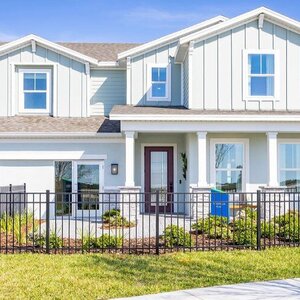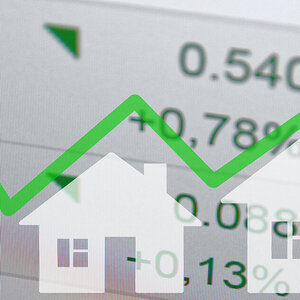Residential Real Estate News

Opportunity Zone Homes Across America Enjoy Price Gains in Q2
Residential News » Irvine Edition | By Michael Gerrity | August 14, 2024 7:15 AM ET
Based on ATTOM's recently released Q2, 2024 Report on Opportunity Zones, the median price for single-family homes and condos increased from Q1 to Q2 2024 in 61% of the analyzed Opportunity Zones. Year-over-year, prices were up in 62% of these zones.
During the Spring home buying season, a national surge in prices saw nearly half of the Opportunity Zones experience price jumps of over 10% both quarterly and annually.
These trends reflect a consistent pattern over the past three years, where home values in Opportunity Zones have moved in tandem with broader national trends, regardless of whether prices have surged, grown modestly, or decreased.
The recent price increases were more pronounced in higher-priced Opportunity Zones and less so in the lowest-priced neighborhoods. However, the overall picture indicates ongoing economic strength or minimal weakness in some of the nation's most distressed areas compared to other markets.
In Q2 2024, Opportunity Zones exhibited price trends that sometimes outpaced national gains. For instance, median home value increases were observed in a slightly higher proportion of zones compared to the national average.
"The trickle-down impact of the extended housing market boom across the U.S. continues to uplift many neighborhoods in need, revealing their economic potential," said Rob Barber, CEO of ATTOM. "This pattern is especially evident in Opportunity Zones as house hunters priced out of more-expensive areas turn to places they can afford. While gains inside these zones vary, many are experiencing price increases, demonstrating the momentum necessary to attract the investments that the Opportunity Zone model is designed to generate."
Defined by the Tax Act as census tracts in or near low-income neighborhoods, Opportunity Zones meet specific redevelopment criteria across all 50 states, the District of Columbia, and U.S. territories. Census tracts, as defined by the U.S. Census Bureau, include areas with 1,200 to 8,000 residents, averaging around 4,000 people.
Despite economic challenges, most Opportunity Zones had home values significantly below national averages in Q2 2024. Median prices in 80% of these zones were less than the U.S. median of $365,000, consistent with trends over the past three years. Additionally, nearly half of the zones had median prices below $200,000.
High-level findings include:
- Median prices of single-family homes and condos increased from the first to the second quarter of 2024 in 1,932 (61 percent) of the Opportunity Zones around the U.S. with sufficient data to analyze, while staying the same or decreasing in 39 percent. Measured annually, medians remained up from the second quarter of 2023 to the same period this year in 2,140 (62 percent) of those zones. (Among the 3,904 Opportunity Zones included in the report, 3,185 had enough data to generate usable median-price comparisons from the first to the second quarter of 2024; 3,456 had enough data to make comparisons between the second quarter of 2023 and the second quarter of 2024).
- Opportunity Zones did even better than the rest of the nation when comparing price changes to shifts in the national median home price. Median values in 45 percent of Opportunity Zones went up from the first to the second quarter of this year by more than the 9 percent annual gain nationwide. The same was true in slightly less - 41 percent - of local housing markets outside the zones. (A similar pattern emerged when comparing shifts in prices annually.)
- However, median prices were up quarterly and annually in only about 45 percent of Opportunity Zones where homes commonly sold for less than $125,000 during the second quarter of 2024. Prices climbed during that time frame in 60 percent to 66 percent of zones with higher home values.
- Among states that had at least 25 Opportunity Zones with enough data to analyze during the second quarter of 2024, the largest portions of zones where median prices increased quarterly were in Massachusetts (medians up from the first to the second quarter of 2024 in 73 percent of zones), Maryland (68 percent), Oregon (68 percent), New York (67 percent) and Virginia (65 percent). States where prices were up quarterly in the smallest portion of zones included Georgia (median prices up in 50 percent of zones), Louisiana (53 percent), Minnesota (56 percent), Kentucky (56 percent) and California (56 percent).
- States where median home values in Opportunity Zones remained up most often year over year included New Jersey (median prices up annually in 81 percent of zones), Nevada (79 percent), Ohio (73 percent), New Mexico (69 percent) and Virginia (69 percent).
- Of the 3,904 zones in the report, 1,148 (29 percent) had median prices below $150,000 in the second quarter of 2024. That was down from 34 percent of zones with sufficient data a year earlier and almost 60 percent five years ago. Another 647 zones (17 percent) had medians in the second quarter of this year ranging from $150,000 to $199,999.
- Median values in the second quarter of 2024 ranged from $200,000 to $299,999 in 23 percent of Opportunity Zones, while they topped the nationwide second-quarter median of $365,000 in just 20 percent.
- The Midwest continued in the second quarter of 2024 to have larger portions of the lowest-priced Opportunity Zone tracts. Median home prices were less than $175,000 in 61 percent of zones in the Midwest, followed by the Northeast (41 percent), the South (39 percent) and the West (5 percent).
Sign Up Free | The WPJ Weekly Newsletter
Relevant real estate news.
Actionable market intelligence.
Right to your inbox every week.
Real Estate Listings Showcase
Related News Stories
Residential Real Estate Headlines
- Las Vegas Area Home Prices Uptick 4.3 Percent Annually in March
- Single-Family Rent Growth in U.S. Trends Upward in 2025
- U.S. Mortgage Rates Tick Down Post Trump Tariffs Commencement
- President Trump's 'Liberation Day' Tariffs Potential Impact on the U.S. Housing and Mortgage Markets
- Baby Boomers Biggest Cohort of U.S. Home Buyers in 2025 as Millennials Decline
- U.S. Monthly Housing Payments Hit Record High in 2025
- U.S. Pending Home Sales Uptick in February
- Global Prime Residential Rent Slowdown Continued in Late 2024
- Ireland Home Price Inflation Hits 8 Year High in Early 2025
- Existing Home Sales in America Uptick in February
- Great Miami Area Residential Sales Decline 15 Percent Annually in February
- Mortgage Rates Uptick in Mid-March, Ending 9-Week Decline in U.S.
- World Property Ventures Builds the Future of Real Estate with New Funding Round
- U.S. Builder Sentiment Declines Amid Economic Uncertainty and Rising Costs
- Black Homeownership Rates in U.S. Enjoy Largest Annual Increase of All Racial Groups
- Wealthy Renters Are Taking Over More of the U.S. Rental Market
- If U.S. Congress Does Not Extend NFIP Soon, Thousands of Daily Home Closings Impacted
- U.S. Mortgage Applications Spike 11 Percent in Early March
- Greater Palm Beach Area Residential Sales Rise in Early 2025
- New Apartments in U.S. Are Leasing at Slowest Pace on Record
- U.S. Mortgage Rates Drop to 4 Month Low in March
- Overall U.S. Mortgage Delinquency Rates Dip in December
- New Tariffs on Canada, Mexico to Impact U.S. Homebuilder Input Costs
- Monaco's Property Market: A Tale of Two Cities
- U.S. Home Purchase Cancellations Surge, 1 in 7 Sales Getting Canceled
- U.S. Pending Home Sales Hit Historic Low in Early 2025
- Greater Miami Area Residential Sales Dip in January
- Governor DeSantis Supports Ending Property Taxes in Florida
- WPV Aims to Become the Berkshire Hathaway of Real Estate Tech
- U.S. Home Sales Slump Continues in January
- Average Americans Spend 38 Percent of Monthly Income on Mortgage Payments
- Switzerland's Safe-Haven Appeal Grows with World's Wealthy Homebuyers
- U.S. Builder Confidence Rapidly Declines in February
- Las Vegas Home Sales Rise 6.7 Percent Annually in January, Condo Sales Dip
- Homebuyer Demand in America Drops to 5-Year Low in Early 2025
- Ownership More Affordable Than Renting in Most U.S. Markets
- The World's First Global Listings Service Launches, Called a GLS
- Home Prices Continue to Rise in 89 Percent of U.S. Metros in Late 2024
- Global Luxury Residential Prices Showed Gradual Improvement in Late 2024
- U.S. Construction Hiring Rate Drops to Lowest Levels in 5 Years





